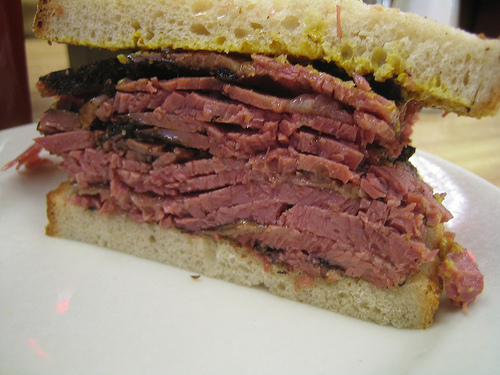Rise of the Publisher Arbitrage Model
- Edit
- Delete
- Tags
- Autopost
The business of the web is traffic. Always has been. Always will be. That’s why I was a bit surprised with how much play Rishad Tobaccowala’s quote received last week in the WSJ:
"Most people make money pointing to content, not creating, curating or collecting content."
The original lessons of how to make money on the web got lost because at some point everyone with a web site thought they could go on forever just selling impressions. They didn’t foresee two things:
A) The massive amounts of inventory being unleashed on the web. In the last two years alone Google’s index has gone from 15B pages to 45B pages.
B) The explosive rise of the ad exchange model with its third party cookie matching business that gave advertisers the ability to reach a publisher’s audience off the publisher site and on much cheaper inventory.
Fortunately the more things change on the web the more they stay the same – especially the business models. Traffic arbitrage, the web’s original model, is a more viable model than ever for publishers and likely the only hope to build a sustainable business in the digital age.
The web is literally built around traffic. Here’s what it looks like right now.
From Search to Email to Affiliate the value and monetization of the web occurs in sending and routing these clicks or as Tobaccowala said “pointing out” at a higher return than your cost of acquiring the traffic.
Google of course is the biggest player in the arb business. 75% of the intent Google harvests costs them nothing. They’ve been able to leverage all the intent generation created in other channels like TV that shifts to Google for free. Just take a look at how much TV drives Search. But Google also pays for traffic. Last year they spent over $7.3 Billion or 25% of revenue on what they call TAC (traffic acquisition cost) to get intent. Of course you need this kind of blended model to be successful as Google is with arb.
With the growing (and free) traffic generating intent to publishers it is time they got in this game. Organic Search continues to drive higher percentages of traffic to top publishers (and the Panda update has pushed that even higher). YouTube, Facebook and Twitter are also sending more traffic all the time at no cost to Pubs. The seeds of a huge arb model continue to be sown.
Vivek Shah CEO of Ziff Davis speaking to Ad Exchanger about ‘What Solutions are Still Needed For Today’s Premium, Digital Publisher’ put it this way:
“…you need to invest in technology that can sort through terabytes of data to find true insights into a person’s intent… not just surface “behaviors.”
This speaks directly to the arb model and how it becomes a true revenue engine for publishers. Once you understand the intent that is present on your site you can then quantify its value. Once you quantify the value you can figure what intent you need to get more of, seed that intent with new content and how figure out how much you can spend to drive traffic to it. This is exactly the model we’ve been working with publishers - using Yieldbot to qualify and quantify the intent on their sites.
So the future of the web looks a lot like the past. There will be marketing levers and technologies that optimize what traffic you drive in and there will be marketing technologies that optimizes where and at what value that same traffic goes out. Everything else you will do in your business will support those value creation events. Yieldbot just wanted to “point out” that for publishers.


